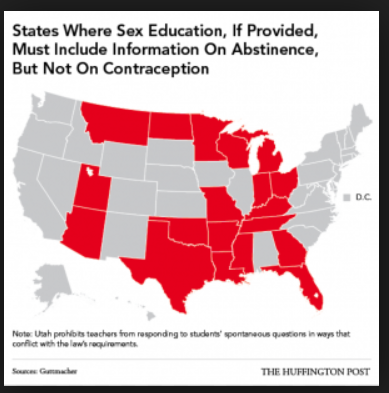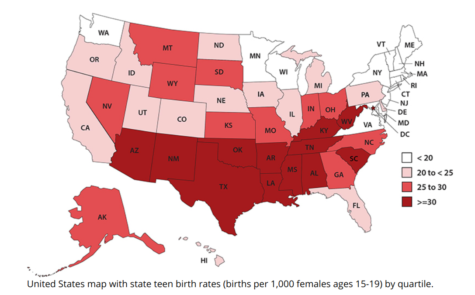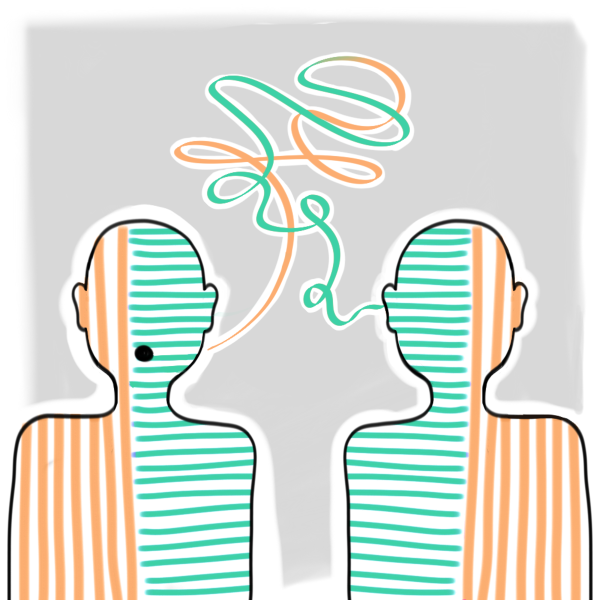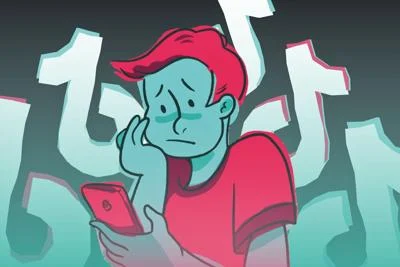Why Abstinence-Only Education Doesn’t Work

Huffington Post
Freshman seminar health classes are definitely ingrained in your memory if you’ve attended Sandy Spring since freshman year. Though the class covered a broad range of health and wellness topics, a significant portion of the year focused on comprehensive sex education. Ilene went beyond teaching the clinical side of sex education, which includes the prevention of STIs and pregnancy, to talk about sex and its connections to media, intimacy, and more. Though many felt embarrassed during these illuminating classes, they were more in-depth than many sex education classes offered to students in public schools. So what happens to those students in public schools that virtually brush over sex education?
In 2015, 19 states had a policy that sex education, if provided, must cover abstinence and not contraception. Abstinence is the practice of waiting until marriage to have sexual relations or abstaining from sex entirely. This method of education has been proven quite ineffective because it doesn’t give students information on methods of contraception or preventing STIs. Instead, abstinence-only education paints sex as a scary, unsafe act that should wait until marriage. It doesn’t give students any information on how to make safe, informed decisions, which leads to risky sexual behaviors. According to a journal published by the NIH, “increasing emphasis on abstinence education is positively correlated with teenage pregnancy and birth rates” and “may actually be contributing to the high teenage pregnancy rates in the U.S.”

The article recognizes that teen birth rates are affected by many other factors, but argues that comprehensive sex education across the U.S. could lower our teen birth and STI rates, which are both very high among developed countries. “For every 1000 girls aged 15-19, an average of 7.8 gave birth in France while 41.9 gave birth in the U.S,” according to NIH data from 2006. In France, a national sex education curriculum was introduced in 1998. Though 14 and 15-year-olds are only required to take 2 hours of this curriculum per year, it is informative enough that students aren’t engaging in as many risk behaviors. France’s effective curriculum is a great example of how succinct sex education can still be effective as long as it’s informative and doesn’t withhold information from students.
When asking our school counselor Ilene about the pros and cons of abstinence-only education, she said “There are limited pros. It instills shame about sex, doesn’t prepare students for when they become sexually active, and is heteronormative in assuming that all sex results in pregnancy.” Lastly, it is just plain “ineffective.” Though comprehensive sex education is one step in improving the health of teenagers and lowering their pregnancy rates, much more has to be done. We can’t make leaps in teen sexual health without rich, affordable, and accessible community programs and clinics as well.
https://www.ncbi.nlm.nih.gov/pmc/articles/PMC3194801/
https://www.cdc.gov/teenpregnancy/about/alt-text/map-state-text.htm
https://www.vox.com/2015/12/23/10652258/teen-birth-decline-map

Hi, my name is Rebecca Megginson. I'm a sophomore at Sandy Spring Friends School who enjoys writing about politics, pop culture, and SSFS life. I joined...










